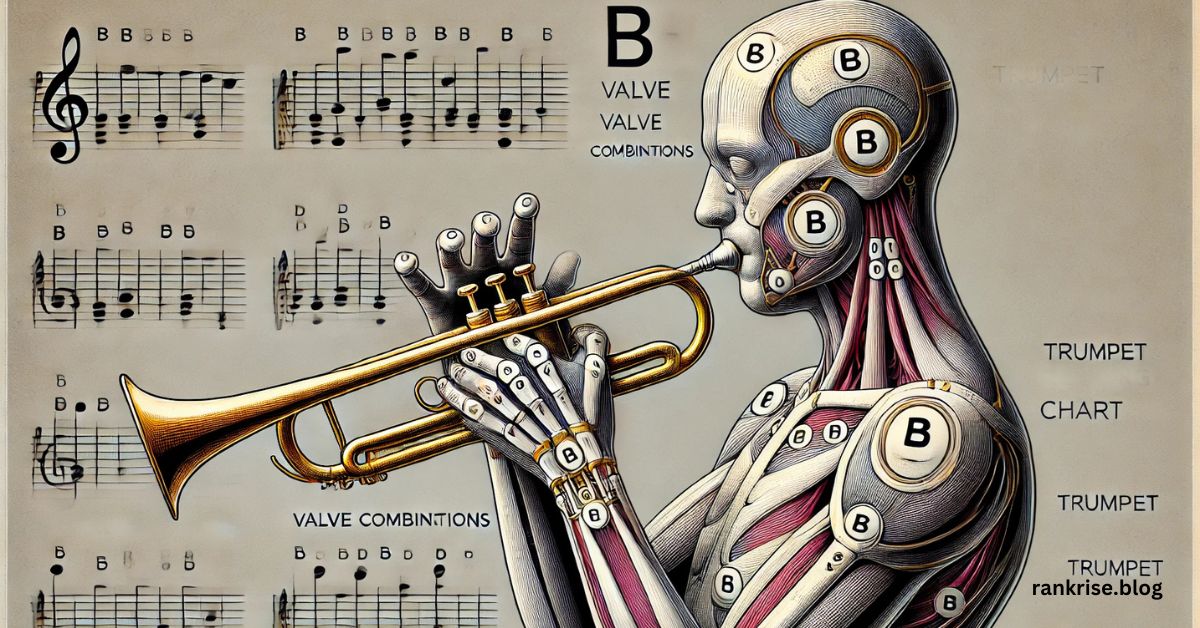The trumpet fingering chart is an essential tool for every player, from beginners to seasoned musicians. It helps you understand which valves to press to produce different notes. The trumpet has three valves, and combining them in various ways allows you to play a full range of notes. In this guide, we will explore everything you need to know about trumpet fingerings, from basic notes to advanced techniques.
Understanding the Basics of the Trumpet Fingering Chart
The trumpet produces sound by pressing down valves in different combinations while adjusting lip tension and airflow. Each valve combination corresponds to a specific pitch. The standard B♭ trumpet follows a simple fingering system, where notes can be played with open valves or a mix of pressed valves. Beginners often struggle with learning fingerings, but using a fingering chart simplifies the process. A proper understanding of this chart can significantly enhance your playing accuracy and technique.
Standard Trumpet Fingerings for Beginners
To play a C note, no valves are pressed; for D, you press the first and third valves. The E note is played by pressing first and second valves, while F requires only the first valve. As you go up the scale, G is played with no valves, A with the first and second valves, and B with the second valve. Memorizing these basic fingerings will help you progress quickly. Practice daily with a fingering chart to get comfortable with these positions.
Advanced Trumpet Fingerings and Techniques
Once you master basic notes, expanding your range is the next step. High-register notes require a strong embouchure and precise finger coordination. Notes beyond high C involve using alternate fingerings to maintain intonation and ease transitions. Some advanced players use half-valve techniques to create unique tones. Understanding multiple fingerings for the same note can also help with smoother playing in fast passages. Using a trumpet fingering chart designed for advanced players will accelerate your learning process.
Why a Trumpet Fingering Chart is Important
A trumpet fingering chart is like a road map for your instrument. It visually shows the exact finger placements needed for every note. This helps beginners avoid mistakes and play with better accuracy. Even professional players refer to these charts to improve their efficiency, especially when playing complex pieces. Using a well-designed chart ensures proper muscle memory, making it easier to switch between notes fluently. Keep a printed or digital chart handy during practice for quick reference.
Where to Find the Best Trumpet Fingering Charts
There are many resources available online to access high-quality trumpet fingering charts. Websites like Amro Music provide free, printable charts for all 12 major scales. Mobile apps such as “Trumpet Fingering Chart” offer interactive guides, allowing you to hear the notes as you play. These tools are extremely useful for beginners who need a visual and auditory reference. You can also find detailed video tutorials on platforms like YouTube to guide you through each fingering in a practical way.
Tips for Memorizing Trumpet Fingerings Faster
Memorizing trumpet fingerings can be challenging, but there are several effective strategies to speed up the process. Practicing daily with a fingering chart helps reinforce muscle memory. Using flashcards with note names and corresponding fingerings can be a fun way to test yourself. Playing simple songs and scales repetitively will help ingrain the finger placements into your memory. Additionally, visualizing finger movements away from the instrument can enhance recall and build confidence in your playing ability.
Common Mistakes When Learning Trumpet Fingerings
Many beginners struggle with trumpet fingerings due to common mistakes that can be easily corrected. One major issue is pressing the wrong valve combination, which leads to incorrect notes. Some players also rely too much on their eyes instead of developing a natural feel for the fingerings. Skipping warm-up exercises can make it harder to play accurately. Consistently using a trumpet fingering chart and practicing methodically can help avoid these errors and improve overall performance.
Conclusion: Mastering Trumpet Fingerings Efficiently
Learning trumpet fingerings may seem challenging at first, but with the right resources and consistent practice, it becomes second nature. Using a trumpet fingering chart regularly helps you improve your speed and accuracy. Whether you are a beginner or an advanced player, always refer to your chart to ensure correct fingering. Mastering these basics will allow you to focus more on expression and musicality rather than worrying about which valve to press. Start practicing today and enhance your trumpet skills effortlessly!
FAQs About Trumpet Fingering Chart
Why do I need a trumpet fingering chart?
It helps beginners learn finger placements quickly and improves accuracy for all players.
Are there alternate fingerings for the same note?
Yes, alternate fingerings exist to help with smooth transitions and better intonation.
Where can I download a printable trumpet fingering chart?
You can find free charts on websites like Amro Music or through mobile apps.
How long does it take to memorize trumpet fingerings?
With regular practice, most players memorize them within a few weeks.
Can a fingering chart help me play high notes?
Yes, it guides you through the correct valve combinations for playing in the upper register.
By using a trumpet fingering chart daily, you’ll build confidence in your playing and master the instrument in no time!



